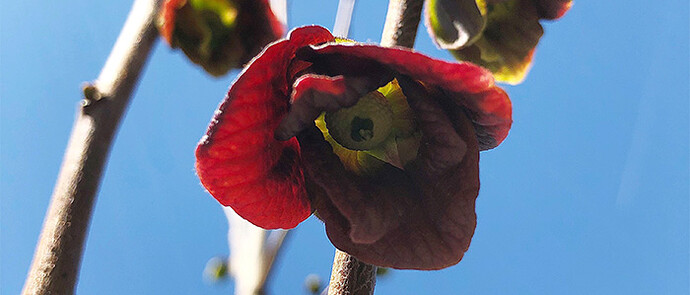We need to first understand the terms Dioecious and Monoecious. " A monoecious plant is one that has male and female flowers on the same plant, or that has flowers on every plant that contain both male and female reproductive components. A dioecious plant has either male or female flowers, not both. For dioecious plants to reproduce, a male plant must be near a female plant so that pollinators can do their work."
Here is the start of the explanation. One green world gave a great explanation here at the link to their website.
"
1-877-353-4028
Account & cart
A Peek into Pawpaw Pollination
May 15, 2020 OGW Growing Guides
0 shares
Pawpaw pollination is a subject we receive many questions about each year. The Pawpaws unique flowers don’t resemble anything like the fragrant and dainty rose family flowers that most fruit trees in the temperate world produce. Pawpaw flowers are a different beast entirely. They are a deep purplish maroon color and the fragrance is…well, not something you might want to revisit over and over again like a jasmine blossom. It’s more akin to something rotting, which is just what the pollinators of pawpaws prefer!
Rather than the various native and imported bees that most gardeners try to attract to their garden for pollination, the Pawpaw is pollinated by various fly and beetle species. These insects are far more attracted to the scent of yeast, rot and fermentation than they are to some sweet sugary cherry blossom. This unique pollination strategy is also the key to getting your pawpaws pollinated! Planting phacelia and mints won’t bring the pollinators in for pawpaws but rotting fruit and other food scraps might do the trick! Checkout this video to learn more about the flies and beetles that are attracted to pawpaws!
Even though it appears that a wide variety of beetle and fly species visit the flowers, much research is still to be conducted on which frequent the flowers most. We’ve heard from many gardeners that their trees produce plenty of flowers but seem to never get pollinated. This could be due to a lack of pollinators or simply not enough pollen and genetic diversity. Homegrown Pawpaw gardens might only have a few varieties planted as opposed to a native forest that has dozens or hundreds of pawpaw trees and thousands of flowers!
So for those of you that are antsy to taste those delicious Pawpaw fruits, hand pollination can be an easy solution. But there are a few things you’ll need to know first:
1. Pawpaw trees are self-incompatible meaning that the pollen from one variety will not fertilize the ovaries and create fruit on that same tree which is why at least two different varieties are needed for Pawpaws to set fruit.
2. When hand pollinating, recognizing the different stages of pawpaw flowers is an important key detail to know. When they first open they’ll be in the female stage of flowering with the little green stigmas sticking up above the still unopened male flowers. They will remain like this for a few days, receptive to pollen from other trees.
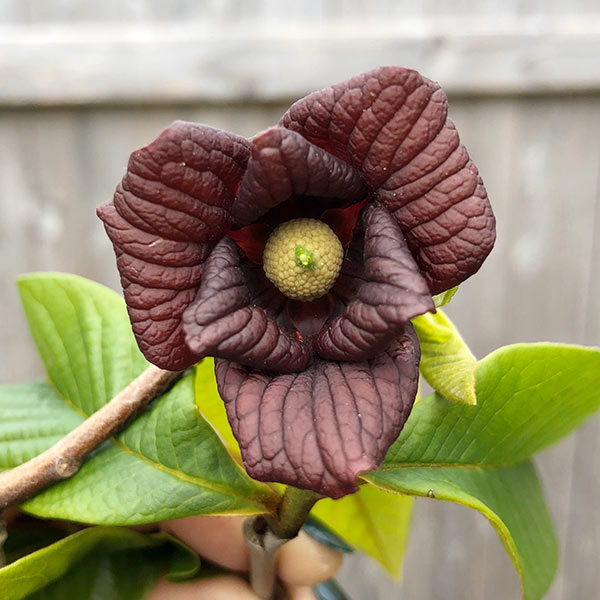
3. Next the male flowers open and begin shedding pollen. When you first begin hand pollinating you’ll want to take your paint brush or cotton swab and get it nice and covered in pollen. You then move this pollen to a different tree’s flowers that are still in the female stage of flowering. Be sure to get it right on those receptive stigmas and be liberal with how much pollen you spread.
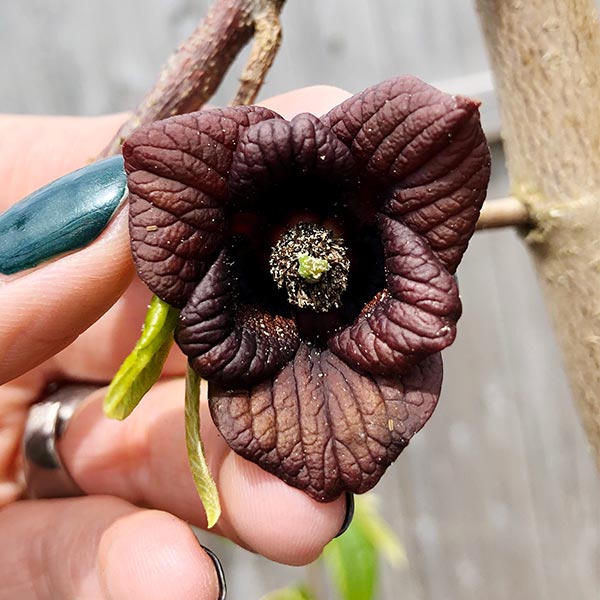
4. If all goes as planned you’ll soon see tiny clusters of pawpaw fruits just beginning to form. These will (hopefully) become the giant tropical tasting Indiana bananas in the fall!
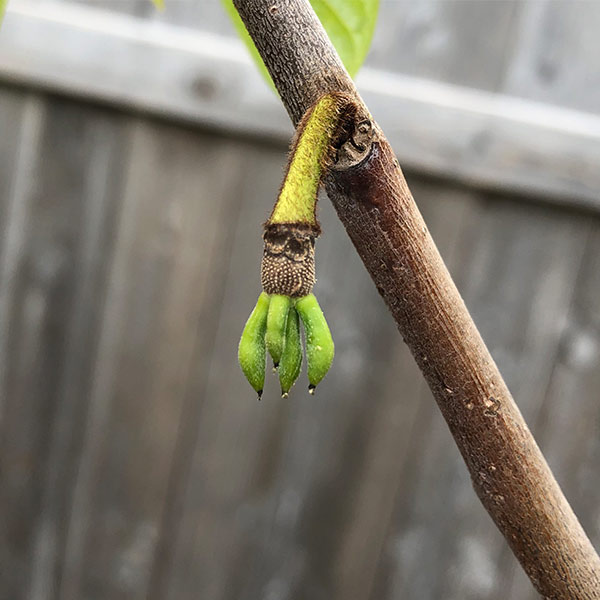
OGW’s Latest Highlights
- Planting and Care Guide
- “Feijoa- A Story of Obsession & Belonging” Interview with Author Kate Evans
- Understanding USDA Cold Hardiness Zones
Pruning Bare Root Fruit Trees
Video Player
00:00
00:00
WHO WE ARE
At OGW we offer a diversity of food plants and their companions from around the world. We offer unique and rare fruit and nut trees, shrubs, and vines. We’ve been sharing our passion for edible plants and organic gardening since 1994. We are a family owned and operated nursery in Portland Oregon. We ship our seeds & plants to all 50 states. At our retail garden center we offer seasonal fruit tasting, preservation and plant care classes as well as hold events in the community. We support local food sovereignty- grow your own One Green World!
Resources
- Frequently Asked Questions
- My Account
- Catalog
- Purchase Gift Certificate
- Shipping Information
- Shop Now
Get All the Latest Updates
2025©ONE GREEN WORLD. ALL RIGHTS RESERVED - PRIVACY NOTICE - CONDITIONS OF USE
"
https://www.wilsonbrosgardens.com/pollination-of-paw-paw-trees.html
" How To Make Paw Paw Trees Produce More Fruit
Posted by Brent Wilson on 6/7/2017 to Fruit Gardening
Paw Paw Tree Pollination
Regarding pollination of paw paw trees, there is some controversy about whether or not they are self-pollinating. Based on that maybe 1 out of 100 to 200 flowers will produce fruit, they are considered as self-infertile, though more flowers may pollinate on trees in different areas of the country. One problem with pollination is that bees don’t like and will not visit the flowers of paw paw. Instead, they rely on flies and carrion beetles for pollination, which are not abundantly indigenous throughout the US.
Some sources say that you must have two grafted varieties for pollination, but this doesn’t make sense because how did trees pollinate before man came along to graft specific cultivars? Stark Bros says “You can plant two or more seedling pawpaw trees (grown from seed), which will be able to cross-pollinate one another,” which makes more sense as this is how paw paw trees in the wild must’ve pollinated before grafting came along. And where do the grafted cultivars come from? They come from seedlings that showed unique characteristics and qualities. Our trees are grown from seedlings. That said, one can plant various varieties/cultivars for possible increased pollination and fruit yield.
Whether you have seedling-grown or grafted cultivars, one way to ensure increased pollination and fruit production is by hand-pollination. We do this with pomegranate trees and several other types of trees and plants in our own gardens and get way more fruits than if we don’t hand pollinate.
How To Pollinate Paw Paw Tree Flowers By Hand
Beginning in March keep an eye on mature trees for the presence of the upside down maroon flowers. Once they start blooming they continue to do so for about six weeks or so. When inspecting trees carry a sealable plastic food bag with you.
What you want to look for is male flowers that are shedding pollen. The petals on these flowers will be fully open and you might smell a fetid odor. Pollen is ripe for gathering when the ball of anthers is brownish in color, loose and friable. Pollen grains should appear as small beige-colored particles, as shown on the tip of the paint brush in the photo below.
Male flower
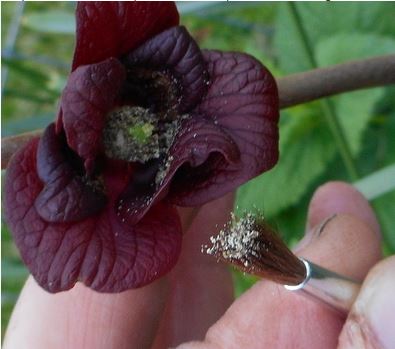
When you find a male flower that is shedding pollen hold your plastic bag beneath it and carefully push the bag upwards in a position where it partially envelops the flower. Then use your finger to gently tap on the base of the flower to release the pollen into the bag. Seal the bag and make sure to use the pollen within an hour.
Next, identify female flowers on the same or a different tree. Look for flowers that are no more than one-fourth to one-half open as these flowers are still in the female stage and ready to accept pollination. Mature female flowers turn from green to a maroon shade. Some green may still be present and the petals may appear to be pressed tightly together. The stigmas are a bright, shiny green. The anthers, or male parts, are immature, still green and compressed in a tight ball inside the petals at the base of the flower. As long as their petal tips have begun to crack apart, the blooms are excellent candidates for hand-pollination.
Female flower
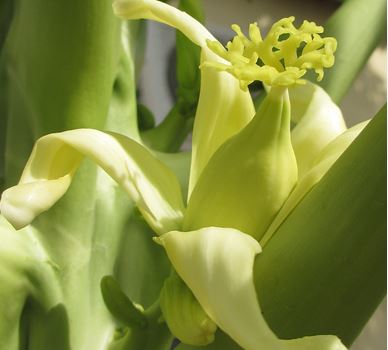
Next, dip a soft artist’s paintbrush in the pollen in the bag. Spread the female flower’s petals gently with your finger. Insert the paintbrush into the flower. Touch the stigma at the base of the inside of the bloom with the pollen on the tip of the brush and remove the brush; one touch is enough. Repeated applications of pollen increases the number of seeds in the fruit that will develop from this flower.
Next, pinch off the tip of one of the petals as a reminder that you have already pollinated the flower. Skip the rest of the blooms on the branch, as developing pawpaw fruits are very heavy and can damage limbs. Repeat pollinating female flowers on other branches."
If your looking for named varities you might try this link instead
Many of you have heard me use upland and lowland pawpaw terms. Maybe this person is a relative or someone shared knowledge with them but they are in the know when it comes to pawpaw Pawpaws can be separated into two categories: Lowland pawpaws and Scrub pawpaws.
"
Lowland Pawpaws
Asimina triloba (common pawpaw)
Asminina parviflora (dwarf pawpaw)
These trees have large leaves and prefer richer soils found in river basins. They form extensive root systems that do not survive transplanting. They can be found in any well drained (not a swamp) lowland such as river valleys, from the Apalachicola in N. Florida all the way north to the Great Lakes and west of the Mississippi!
These species both have small, dark purple flowers.
Scrub Pawpaws
All 10 other species of Asimina
These small trees down to herb-sized plants are adapted to hot, and extremely poor soil conditions found across Florida. Fire is an important part of their life cycles, to prevent overgrowth from strangling their small forms. After fire, they regrow vigorously from extensive taproot systems. Due to these root structures, they can not be transplanted past a year of age.
The six scrub pawpaws shown below are the most common. The four other species are endangered or near extinct due to development across coastal and southern Florida.
These species have highly variable flowers, in color shape and size. Colors are white, yellow, and purple. Petal number varies between 2-27. Size between 1-4 inches."

